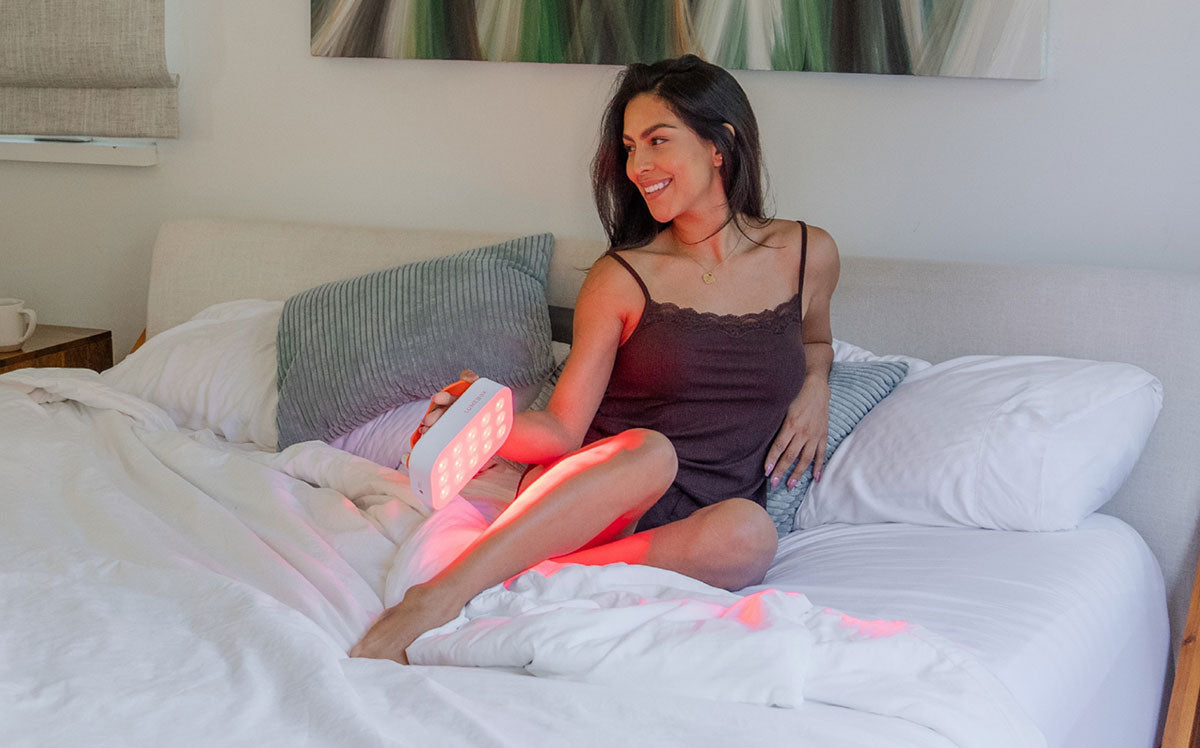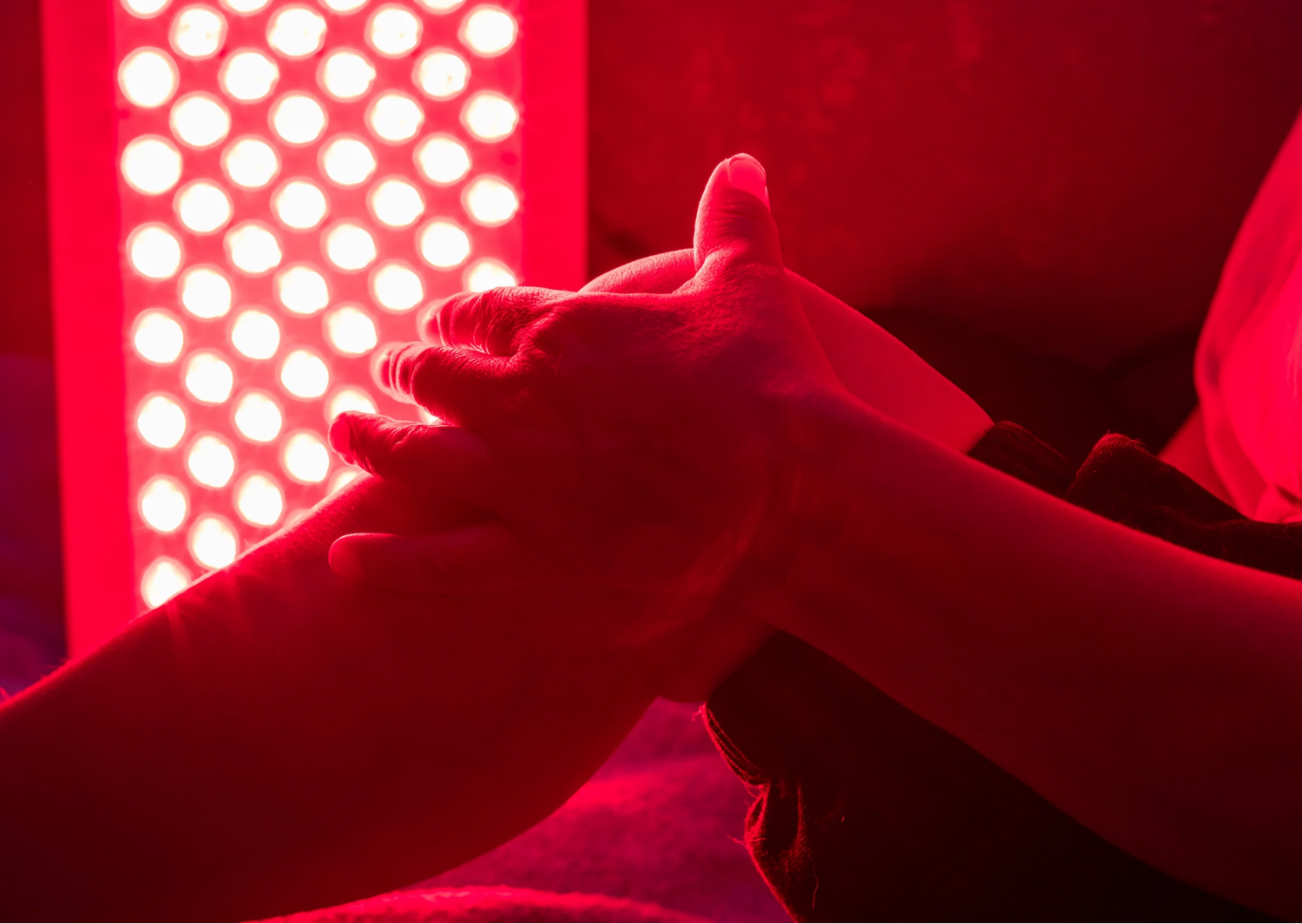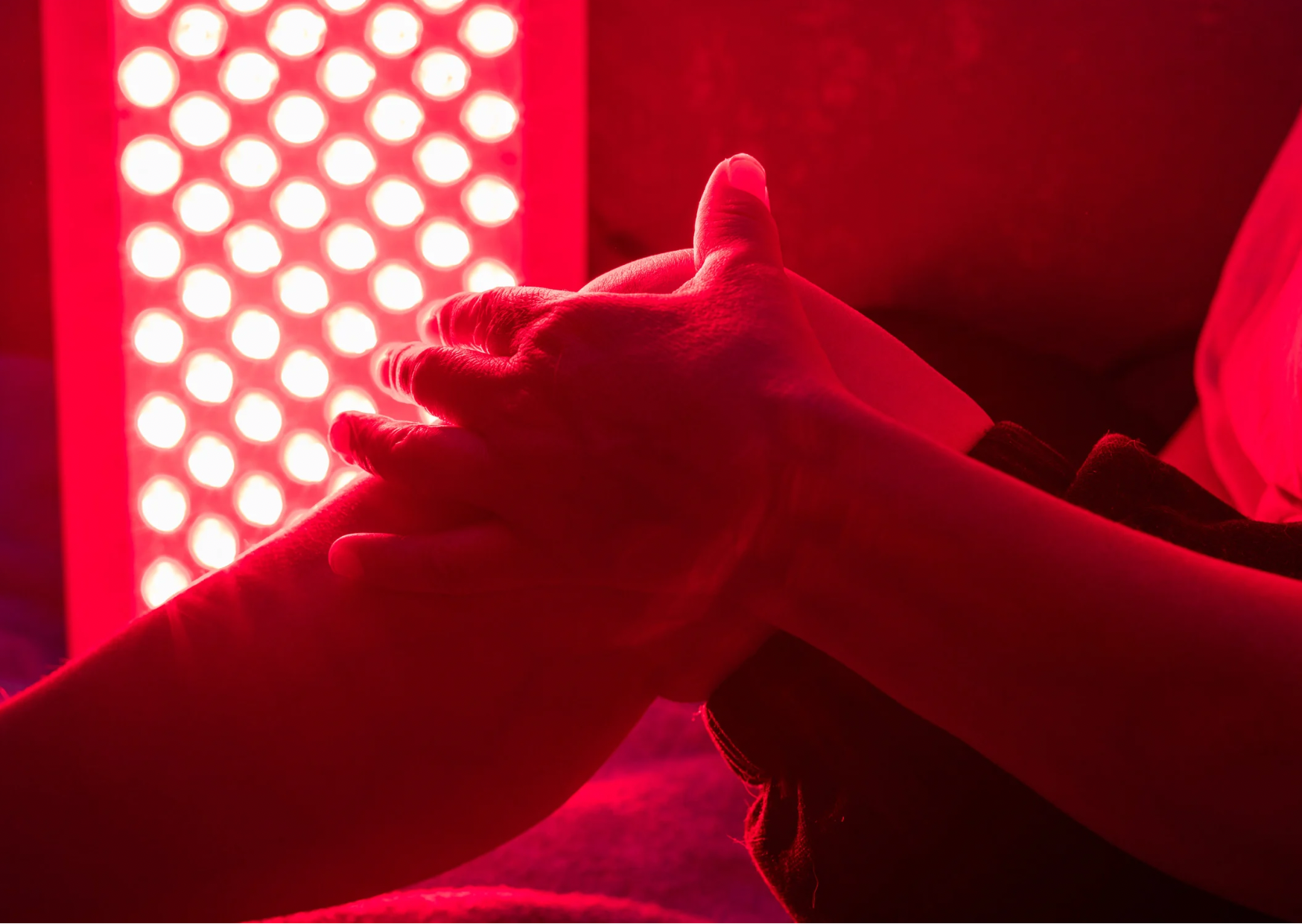Does Flicker Affect Red Light Therapy?
If you’ve been deep in the red light therapy research trenches, you’ve likely come across the flicker debate—and found conflicting answers.
“Is there flicker in red light therapy?”
“Are LEDs safe for long-term use?”
How do I know if my device is flicker-free?"
Choosing the right device can make all the difference when it comes to flicker in red light therapy. While it's not entirely flicker-free, you can dodge most of the harmful effects by opting for a high-quality device. Let's dive into whether this is something you should be concerned about!
What is Flicker?
Any change in light brightness is known as flicker. It can range from being highly noticeable (like a strong blinking effect) to barely detectable, or even invisible to the human eye.
Flicker can happen with LED, fluorescent, and even some incandescent lights.
It's most often linked to LED lights, which have sparked some chatter online about their use in red light therapy devices. You've probably seen influencers or bloggers raising concerns, but it's all about choosing the right device for a safer experience.
Low Flicker or Just Marketing? How to Understand Flicker Ratings
Some red light therapy companies report flicker ratings, while others don’t mention them at all.
At the end of the day, flicker isn’t a major concern in a well-made device (stay tuned for why).
That said, you might see companies claim "low flicker," but this can be misleading—if they’re referring to low frequency in Hertz (Hz), it actually means the flicker is more noticeable and potentially problematic.
Since there are multiple ways to measure and report flicker, companies may choose one metric over another. To help you assess whether a device truly has a low flicker, here are some common ways it may be reported:
Waveform: A visual representation of how flicker looks over time.
 Flicker index:
Flicker index:
0 = no flicker (constant light)
1 = extreme flicker (light fully turns on and off)
Flicker percentage:
0% = no variation in light.
100% = largest variation. <10% is considered safe
Flicker rate or frequency:
How many times per second the light fluctuates. A light flickering at 120 Hz means it cycles on and off 120 times per second.
Modulation depth:
The difference between flicker modulation depth and flicker frequency comes down to how much the light is changing versus how fast it's changing.
- High modulation depth = bigger brightness changes
- Low modulation depth = smaller brightness changes
What Flicker Frequency Is Safe?
Generally, low-frequency flicker is more uncomfortable. Flicker rates below 120 Hz have been linked to headaches, eye strain, or fatigue after prolonged exposure. [1] In extreme cases, it can also lead to nausea and epileptic seizures.
15-20 Hz is particularly seizure-inducing. [2]
Invisible, high-frequency flicker above 120 Hz is considered safer; however, it can still be detected by your brain and nervous system and may lead to discomfort in sensitive individuals. (Most cheap LED bulbs have ~120 Hz flicker.)
Flicker frequency >200 Hz is recommended for comfort and safety.
Higher flicker rates (>2000-3000 Hz) are generally imperceptible to humans and considered safe.
In a nutshell, according to the IEEE PAR1789 Flicker Guidelines: [3,4]
- Below ~70 Hz → Avoid whenever possible
- Below ~165 Hz → Still potentially problematic
- Above 200 Hz → Lower risk of known effects
- 90-1250 Hz → Minimize modulation depth (avoid big changes in brightness)
-
Above ~2000-3000 Hz → Generally considered safe
Causes of Flicker in LED Devices: Why Might a Red Light Therapy Device Have High Flicker?
1. AC-Powered LEDs: The Biggest Flicker Culprit
Flicker is most common in AC-powered (alternating current) devices, including most household lighting, such as LED bulbs, fluorescents, and incandescents.
AC power naturally cycles between positive and negative voltages—50 times per second (50 Hz) in most of Europe, Asia, and Africa, and 60 times per second (60 Hz) in the U.S. and parts of the Americas. This rapid oscillation can cause fluctuations in light output, resulting in flicker.
While most people don’t consciously notice it, these instabilities can still trigger headaches, eye strain, and fatigue in sensitive individuals. Some AC-powered devices reduce flicker by using high-quality LED drivers that regulate voltage flow, but lower-end LEDs often lack this feature, leading to more noticeable flicker.
2. DC-Powered LEDs: Steadier and More Reliable
DC-powered LEDs (like battery-operated devices) provide a constant, uninterrupted electrical current, eliminating or drastically reducing flicker. This is why high-quality red light therapy devices, medical-grade lighting, and professional photography LEDs often rely on DC regulation for a more stable output.
That said, flicker can still occur in DC-powered devices if:
- The LED driver is low quality, failing to maintain a steady current.
- The DC power isn’t well-regulated, leading to inconsistencies.
- The device uses pulsed wave technology, a controlled pulsing mechanism used in some RLT devices for specific therapeutic benefits. (Unlike flicker, pulsed waves are intentional and operate at frequencies that don’t cause the same concerns.)
Should I Be Worried About Flicker in Red Light Therapy?
While some red light therapy (RLT) devices have higher flicker rates than others, there is currently no evidence that flicker impacts the effectiveness of RLT.
In fact, hundreds of medical studies have used LED-based light therapy, and none that we’ve read have reported treatment failure due to flicker levels.
The FDA recognizes red light therapy as generally safe, and its widespread use in both medical and consumer markets continues to grow with overwhelmingly positive feedback. If flicker were a major concern for red light therapy, we would expect studies to routinely measure and report it, which they do not.
Additionally, red light therapy sessions are typically short, often lasting just 10-15 minutes. This limited exposure time further reduces any potential for flicker-related discomfort, particularly when using high-quality, well-regulated devices. For extra protection and peace of mind, we recommend you wear the goggles provided with your LUMEBOX to shield your eyes during sessions!
Does LUMEBOX Have Flicker?
LUMEBOX is powered by DC (direct current), meaning it delivers steady, consistent light output with virtually no flicker during use.
You may notice a brief flicker for 1-2 seconds when switching between modes—this is simply the power adjusting between electrical circuits and is not a cause for concern.
Flicker is more common in larger red light therapy panels that plug directly into mains electricity (AC), as they rely on alternating current, which naturally fluctuates.
Tips for Choosing a Low-Flicker Red Light Therapy Device
-> Go for DC, battery-powered options (rather than a plug-in device)
-> Look for devices with high-quality manufacturing, such as ISO 13485 certification and third-party testing to multiple IEC standards. Although there's no specific IEC standard for flicker in red light therapy devices, investing in a well-designed device typically means it includes a high-quality driver that minimizes flicker.
-> Check for Pulsed Wave Therapy (PWT). Used in some red light therapy treatments, PWT can range from 10 Hz to thousands of Hz. Unlike flicker, pulsing involves distinct on-and-off periods. The safety of pulsed light can depend on the frequency and duration of exposure, as well as individual sensitivity. It's always important to check the specifications of your device and consult with a healthcare professional if you have concerns, especially if you have conditions like photosensitivity or epilepsy.
-> Opt for a high irradiance device, like LUMEBOX, which emits 140 mW/cm² of near-infrared light from 1cm away, allowing for shorter treatment times. While flicker is minimal, the shorter session duration further reduces any exposure, allowing you to experience the benefits comfortably.
-> Choose a device that emits only red and near-infrared light to optimize your treatment and avoid the potential downsides of blue light exposure, such as eye strain and sleep disruption.
-> Stay informed! Research on flicker in red light therapy is still evolving, and new studies may provide more insights in the future.
New to red light therapy? Download our free eBook to help you choose the best device.
Already have a LUMEBOX? Download our 6 time-saving tricks guide!
Medical Disclaimer: The information contained in this blog post is intended for educational purposes only and should not be used as medical advice. Everyone responds to light differently. Testimonials are not a guarantee of the results you or anyone who uses LUMEBOX will get because your success depends entirely on your circumstances, and the studies on red light therapy shared were not specifically performed using LUMEBOX. Please check with your doctor before using red light therapy and do not change your medical treatments or lifestyle without consulting your physician first.
References:
[1] Karanovic O, Thabet M, Wilson HR, Wilkinson F. Detection and discrimination of flicker contrast in migraine. Cephalalgia. 2011 Apr;31(6):723-36. doi: 10.1177/0333102411398401. PMID: 21493642; PMCID: PMC3571449.
[2] Fisher RS, Acharya JN, Baumer FM, French JA, Parisi P, Solodar JH, Szaflarski JP, Thio LL, Tolchin B, Wilkins AJ, Kasteleijn-Nolst Trenité D. Visually sensitive seizures: An updated review by the Epilepsy Foundation. Epilepsia. 2022 Apr;63(4):739-768. doi: 10.1111/epi.17175. Epub 2022 Feb 7. PMID: 35132632.
[3] IEEE Standards Association. (2015). IEEE recommended practices for modulating current in high-brightness LEDs for mitigating health risks to viewers (IEEE Std 1789-2015). Institute of Electrical and Electronics Engineers. https://doi.org/10.1109/IEEESTD.2015.7109898
[4] Wilkins, A., Veitch, J., & Lehman, B. (n.d.). LED lighting flicker and potential health concerns: IEEE Standard PAR1789 update. IEEE Standards Working Group. Retrieved from http://grouper.ieee.org/groups/1789/





